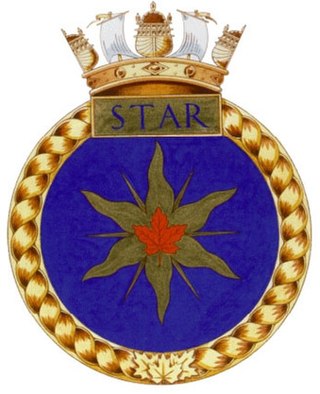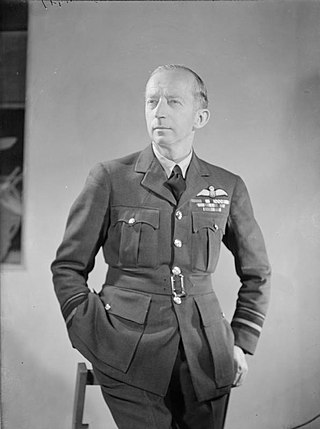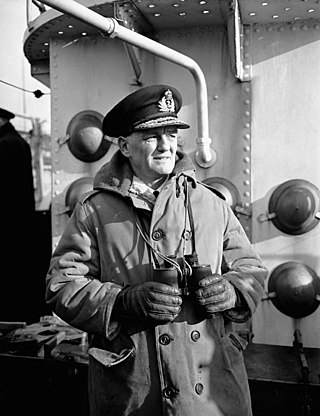
The British Armed Forces, formally known as His Majesty's Armed Forces, are the military forces responsible for the defence of the United Kingdom, its Overseas Territories and the Crown Dependencies. They also promote the UK's wider interests, support international peacekeeping efforts and provide humanitarian aid.

The Air Ministry was a department of the Government of the United Kingdom with the responsibility of managing the affairs of the Royal Air Force, that existed from 1918 to 1964. It was under the political authority of the Secretary of State for Air.
The Minister of Militia and Defence was the federal government minister in charge of the volunteer army units in Canada, the Canadian Militia.
Colin William George Gibson, was a Canadian politician, land surveyor and lawyer.

Marshal of the Royal Air Force Sir William Forster Dickson,, was a Royal Naval Air Service aviator during the First World War, a senior officer in the Royal Air Force during the inter-war years and a Royal Air Force commander during and after the Second World War. Dickson was Chief of the Air Staff in the mid-1950s, in which role his main preoccupation was the establishment of the V Force and the necessary supporting weapons, airfields and personnel. He also served as the first Chief of the Defence Staff in the late 1950s.
Minister of National Defence for Naval Services (Canada) was the minister responsible for the Royal Canadian Navy during World War II. The post was merged into the current post of the Minister of National Defence (Canada). Prior to World War II, another ministerial post, Minister of the Naval Service existed from the creation of the Royal Canadian Navy in 1910 up to 1922 and preceded the Minister of National Defence.

Admiral Percy Walker Nelles, was a flag officer in the Royal Canadian Navy (RCN) and the Chief of the Naval Staff from 1 January 1934 to 15 January 1944. He oversaw the massive wartime expansion of the RCN and the transformation of Canada into a major player in the Battle of the Atlantic. During his tenure U-boats raided the Gulf of St. Lawrence, Canadian Northwest Atlantic command was created, and the RCN provided up to 40% of all escort forces in the North Atlantic. His handling of the RCN's war effort had its opponents however, and he was removed from his post as Chief of the Naval Staff in January 1944. He was sent to London as Overseas Naval Attaché, coordinating RCN operations for Operation Overlord. He retired in January 1945 as a full admiral.

The Allied leaders of World War II listed below comprise the important political and military figures who fought for or supported the Allies during World War II. Engaged in total war, they had to adapt to new types of modern warfare, on the military, psychological and economic fronts.

Air Vice Marshal Stanley James (Jimmy) Goble, CBE, DSO, DSC was a senior commander in the Royal Australian Air Force (RAAF). He served three terms as Chief of the Air Staff, alternating with Wing Commander Richard Williams. Goble came to national attention in 1924 when he and fellow RAAF pilot Ivor McIntyre became the first men to circumnavigate Australia by air, journeying 8,450 miles (13,600 km) in a single-engined floatplane.
Rear-Admiral William Moss Landymore, OBE, CD was a Canadian naval officer. Born in Brantford, Ontario, Landymore joined the Royal Canadian Navy in 1936, but spent much of early career training with the Royal Navy. During World War II, Landymore returned to the Royal Canadian Navy and served aboard destroyers in the Battle of the Atlantic, surviving two sinkings. By the end of the war Landymore had taken a series of positions in Ottawa before returning to destroyer command during the Korean War. He was promoted through the ranks eventually becoming the first Commander of Maritime Command. :andymore became embroiled in a public feud with the Minister of National Defence following the Unification of the Canadian Armed Forces and resigned as a result. He died at Halifax, Nova Scotia.

HMCS Star is a Canadian Forces Naval Reserve Division (NRD) located in Hamilton, Ontario. Dubbed a stone frigate, HMCS Star is a land-based naval establishment for training part-time sailors as well as functioning as a local recruitment centre for the Royal Canadian Navy (RCN). The second oldest of 24 naval reserve divisions located in major cities across Canada, Star was stood up on 15 March 1923 as the Royal Canadian Naval Volunteer Reserve (RCNVR) Hamilton Half Company and then on 1 November 1941 as HMCS Star.

Air Vice Marshal Harold Spencer Kerby, was Canadian-born air officer of the Royal Air Force. He served in the Royal Naval Air Service during the First World War, where he became a flying ace with nine confirmed aerial victories, later transferring to the Royal Air Force, rising to command of British Air Forces in East Africa during the Second World War.

Vice-Admiral George Clarence Jones, was a Royal Canadian Navy vice admiral who served as Chief of the Naval Staff from 15 January 1944 to 28 February 1946.
The 1947 New Year Honours were appointments by many of the Commonwealth Realms of King George VI to various orders and honours to reward and highlight good works by citizens of those countries. They were published on 31 December 1946.
The 1946 New Year Honours were appointments by many of the Commonwealth Realms of King George VI to various orders and honours to reward and highlight good works by citizens of those countries, and to celebrate the passing of 1945 and the beginning of 1946. They were announced on 1 January 1946 for the United Kingdom, and Dominions, Canada, the Union of South Africa, and New Zealand.
The King's Birthday Honours 1942 were appointments by King George VI to various orders and honours to reward and highlight good works by members of the British Empire. They were published on 5 June 1942 for the United Kingdom and Canada.
The King's Birthday Honours 1943 were appointments by King George VI to various orders and honours to reward and highlight good works by people of the British Empire. They were published on 2 June 1943 for the United Kingdom and Canada.

The Air Division originally known as the Air Section and later known as the Naval Air Division was first established in 1924 and it was a Directorate of the Admiralty Naval Staff, that was initially responsible for operational control of aircraft supplied to the Royal Navy by the Air Ministry. In 1939 it was gained full control for the all matters relating to administration, control, policy and organisation of the Fleet Air Arm, it underwent various name changes until it was absorbed as part of the merger of the Admiralty into the new Ministry of Defence in April 1964 as part of the Navy Department where it continued until May 1966 when its remit was changed and when became the Directorate of Naval Warfare.
The 1946 New Year Honours in New Zealand were appointments by King George VI on the advice of the New Zealand government to various orders and honours to reward and highlight good works by New Zealanders, and to celebrate the passing of 1945 and the beginning of 1946. They were announced on 1 January 1946.
The 1946 King's Birthday Honours in New Zealand, celebrating the official birthday of King George VI, were appointments made by the King on the advice of the New Zealand government to various orders and honours to reward and highlight good works by New Zealanders. They were announced on 13 June 1946.









